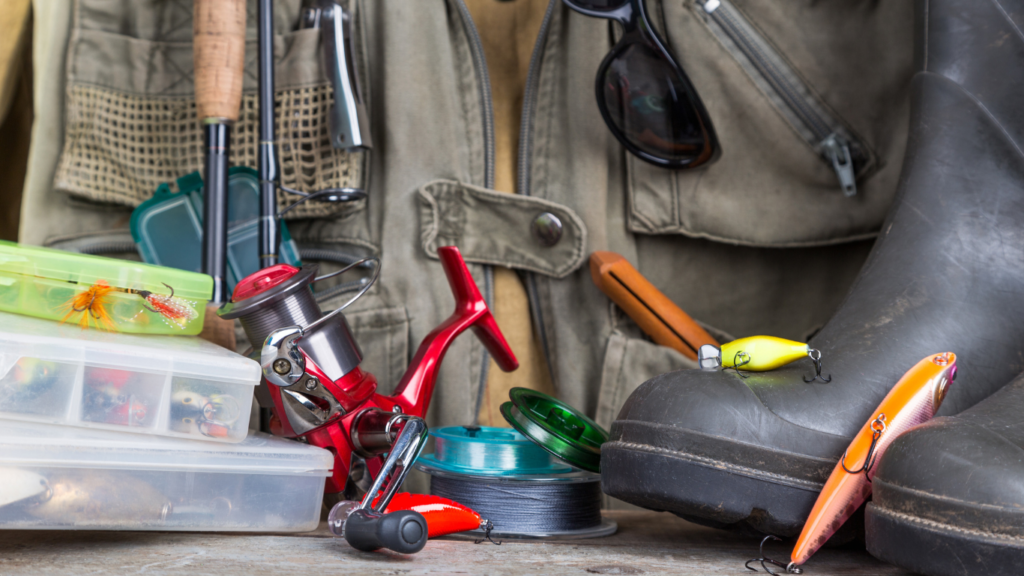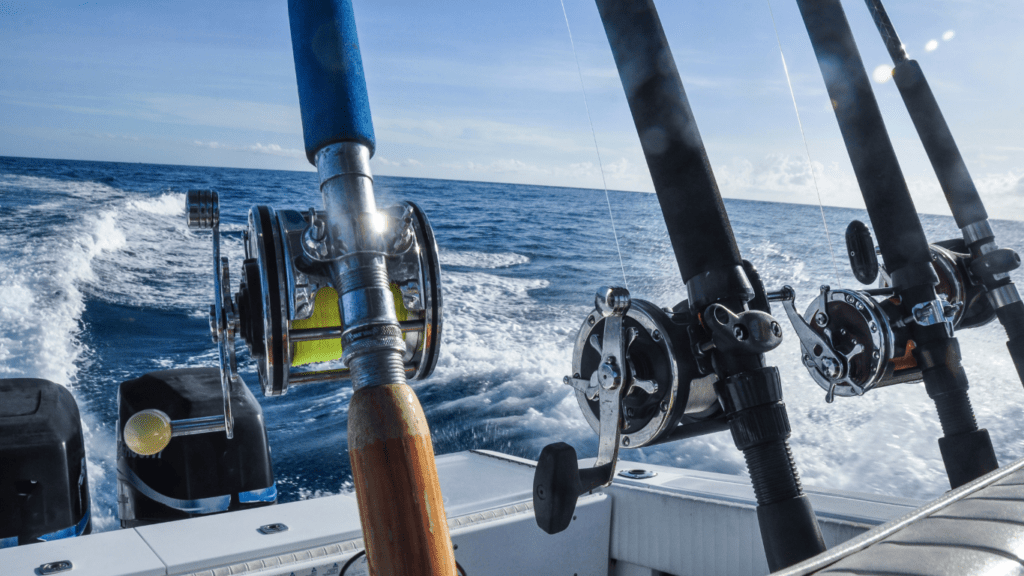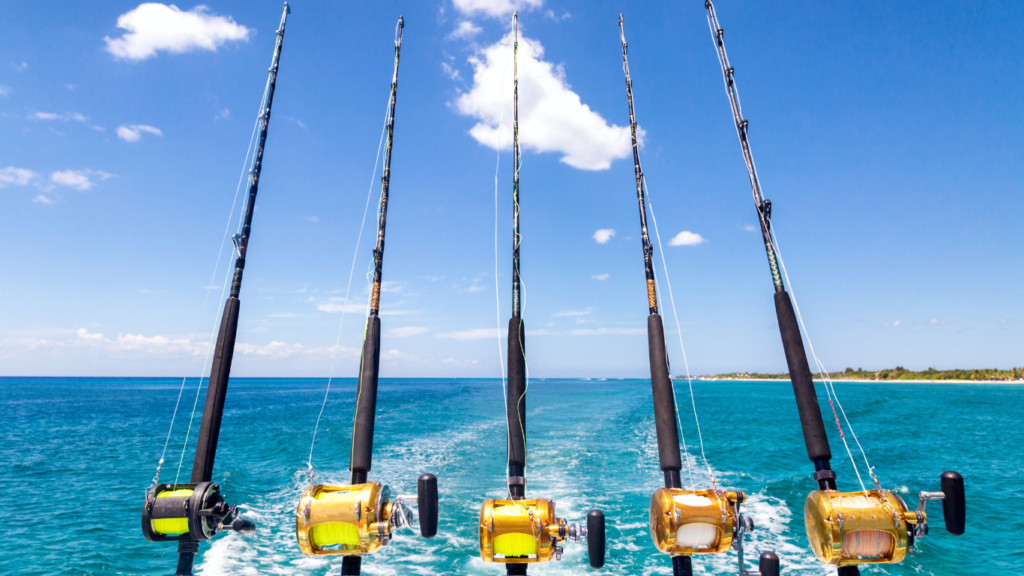Understanding Fishing Footwear
Fishing footwear, whether waders or boots, serves as essential gear, ensuring safety, comfort, and performance in varying conditions. Choosing the right pair depends on understanding their purpose and the features they offer.
Why the Right Footwear Matters
Proper fishing footwear prevents injuries, enhances mobility, and provides protection against environmental elements. For example, waders keep you dry during fly fishing in rivers, while boots ensure grip on rocky terrains. Without the right footwear, extended fishing trips can lead to discomfort from water exposure or slippery surfaces.
Key Features to Consider
- Material: Waders are often made of breathable fabrics like Gore-Tex, while rubber is common for waterproof boots. Materials directly affect durability and suitability for specific environments.
- Traction: Soles vary, from felt for slippery rocks to lugged rubber for muddy banks. Traction ensures stability across diverse terrains.
- Fit: A snug but comfortable fit prevents blisters and retains warmth in cold waters. Poorly fitting waders or boots can hinder movement.
- Insulation: Neoprene offers thermal insulation for colder waters, while lightweight options accommodate warmer conditions.
- Style Compatibility: Chest waders suit deep waters, hip waders fit shallow streams, and ankle boots are versatile for various fishing styles.
Each of these features plays a role in adapting to conditions, ensuring safety, and maximizing performance during fishing.
Types of Fishing Waders
Fishing waders are designed to keep anglers dry while providing comfort and mobility in wet environments. Selecting the right type depends on water depth, weather, and the type of fishing you plan to do.
Chest Waders
Chest waders offer maximum coverage, reaching up to the chest area. These are ideal for deep-water fishing or wading through fast-moving rivers. Materials like breathable fabrics or neoprene ensure comfort in various weather conditions. Adjustable suspenders create a secure fit, and built-in boots or stockingfoot designs pair with separate wading boots for added traction and support. Chest waders are great for fly fishing in cold or unpredictable waters.
Hip Waders
Hip waders, extending to the hip, are suitable for shallow streams or marshy areas. Split into pairs, they allow for greater flexibility compared to full-length waders. Rubber or PVC materials provide durability, while their lightweight design offers ease of movement. These are practical for anglers fishing in regions with mild weather conditions or when high coverage isn’t necessary.
Waist-High Waders
Waist-high waders strike a balance between coverage and mobility. They’re higher than hip waders but stop at the waist, making them effective for moderately deep waters. Often made with breathable materials, they provide comfort over long periods. Their design is less restrictive than chest waders, making them a versatile option for fishing in rivers or along shorelines with limited water depth.
Types of Fishing Boots
Fishing boots are designed to offer comfort, protection, and stability in various environments. Choosing the right type depends on the fishing conditions and your specific needs.
Wading Boots
Wading boots provide support and durability for traversing rivers, streams, and rocky surfaces. These boots are often constructed with materials like leather and synthetic mesh, ensuring water resistance and breathability. They feature reinforced soles for protection against sharp rocks and textured outsoles for reliable traction. Anglers prefer these boots for fly fishing and other scenarios requiring enhanced stability in moving water.
Insulated Boots
Insulated boots retain warmth in cold fishing environments, particularly during ice fishing or early spring expeditions. They use materials like neoprene or Thinsulate, which trap heat without adding bulk. With waterproof exteriors and padded linings, they keep feet warm and dry even in freezing conditions. These boots excel in extended fishing sessions where maintaining body warmth is crucial.
Non-Slip Boots
Non-slip boots ensure superior grip on slippery surfaces like wet docks or muddy riverbanks. Their outsoles are made of rubber or synthetic compounds with specialized patterns to maximize traction. Some models include added cleats or studs for enhanced stability on algae-covered rocks. These boots are ideal for fishing in areas prone to water accumulation or slick terrains.
Material Selection
Choosing the right material impacts comfort, durability, and performance in fishing footwear. The material’s adaptability to different conditions ensures a better fishing experience.
Neoprene vs. Breathable Materials
Neoprene provides insulation and is best for cold environments. It’s durable and traps body heat. For example, 3mm to 5mm thick neoprene waders are ideal for icy waters where staying warm is essential. However, neoprene may feel heavy and restrict movement in warmer conditions.
Breathable fabrics, like nylon or Gore-Tex, offer lightweight comfort and moisture control. These materials excel in hot weather or when mobility is crucial. They allow sweat to escape while keeping water out, making them a great choice for active anglers in mild to warm climates.
Rubber vs. Felt Soles
Rubber soles deliver versatility across various terrains. These soles provide excellent traction on muddy banks, rocky surfaces, or slippery boat decks. They’re durable and easy to clean, which reduces the risk of contaminating waterways with invasive species.
Felt soles enhance grip on slick, mossy riverbeds. They’re essential for wet conditions with slimy rocks. However, many regions restrict or discourage their use due to their ability to transport aquatic organisms, making rubber a more eco-friendly option in such cases.
Tips for Choosing the Perfect Fit

Choosing fishing footwear that fits correctly is essential for ensuring comfort, mobility, and overall performance during your trips. It’s important to focus on factors like support, durability, and proper maintenance when making your decision.
Comfort and Support
The right fit ensures all-day comfort and prevents pain or fatigue. A snug but not too tight fit reduces friction and minimizes the risk of blisters. For waders, adjustable straps and belt systems help secure the fit around your torso without restricting movement. Boots should have adequate arch support and cushioning to absorb shock on uneven terrain. Prioritize ankle support, especially in wading boots, as it prevents sprains when walking on rocky or slippery surfaces.
Durability and Maintenance
Durable materials contribute to a longer lifespan for fishing footwear. Reinforced stitching and abrasion-resistant fabrics are essential for waders, while sturdy rubber or synthetic outsoles add resilience to boots. Easy-to-clean materials simplify maintenance, especially for boots exposed to mud or algae. For neoprene waders, rinsing with freshwater after use prevents wear caused by salt or chemicals. Properly drying your footwear after each trip avoids issues like mildew or cracks in the material. Durable footwear lasts longer while maintaining peak performance in every condition.
Best Brands for Fishing Footwear
Choosing the right fishing footwear involves understanding the top brands that offer durable, comfortable, and performance-driven products. Several manufacturers specialize in crafting waders and boots tailored to meet anglers’ specific needs.
Popular Recommendations
- Simms: Known for high-quality waders and boots, Simms provides options like G3 Guide Waders and Freestone Wading Boots. These products use breathable Gore-Tex materials and Vibram outsoles for durability and traction.
- Hodgman: Affordable yet reliable, Hodgman offers lightweight waders like the Hodgman H5 Stockingfoot Waders and cleat-soled boots ideal for beginners and casual anglers.
- Orvis: With a focus on modern features, Orvis waders include options like PRO Waders and Encounter Wading Boots, blending comfort, durability, and premium materials.
- Redington: Redington specializes in versatile gear, with waders such as Sonic-Pro and Predator boots that use reinforced fabric and rubber outsoles for rugged fishing conditions.
- Korkers: Recognized for interchangeable sole systems, Korkers boots like Devil’s Canyon provide unparalleled traction and adaptability for diverse terrains.
- Frogg Toggs: Offering budget-friendly choices, Frogg Toggs boasts products like Amphib Wading Boots and Hellbender Waders, which ensure comfort while meeting essential fishing needs.
Pros and Cons of Each Brand
- Simms: Products excel in durability but come at a premium price, making them suitable for serious anglers investing in long-term use.
- Hodgman: Affordable options are accessible to beginners, though they may lack the advanced features experts seek for challenging environments.
- Orvis: Premium comfort and innovation make Orvis stand out, but the cost may limit availability for those on tighter budgets.
- Redington: Versatility enables use across various conditions, though the mid-range pricing might not appeal to occasional anglers.
- Korkers: Interchangeable soles provide adaptability, yet the additional accessories can increase overall expenses.
- Frogg Toggs: Budget-friendly pricing makes it an excellent choice for newcomers, but long-term durability might not compare to premium brands.
Each brand offers unique features catering to specific fishing conditions, ensuring anglers can find the right footwear for their adventure.





